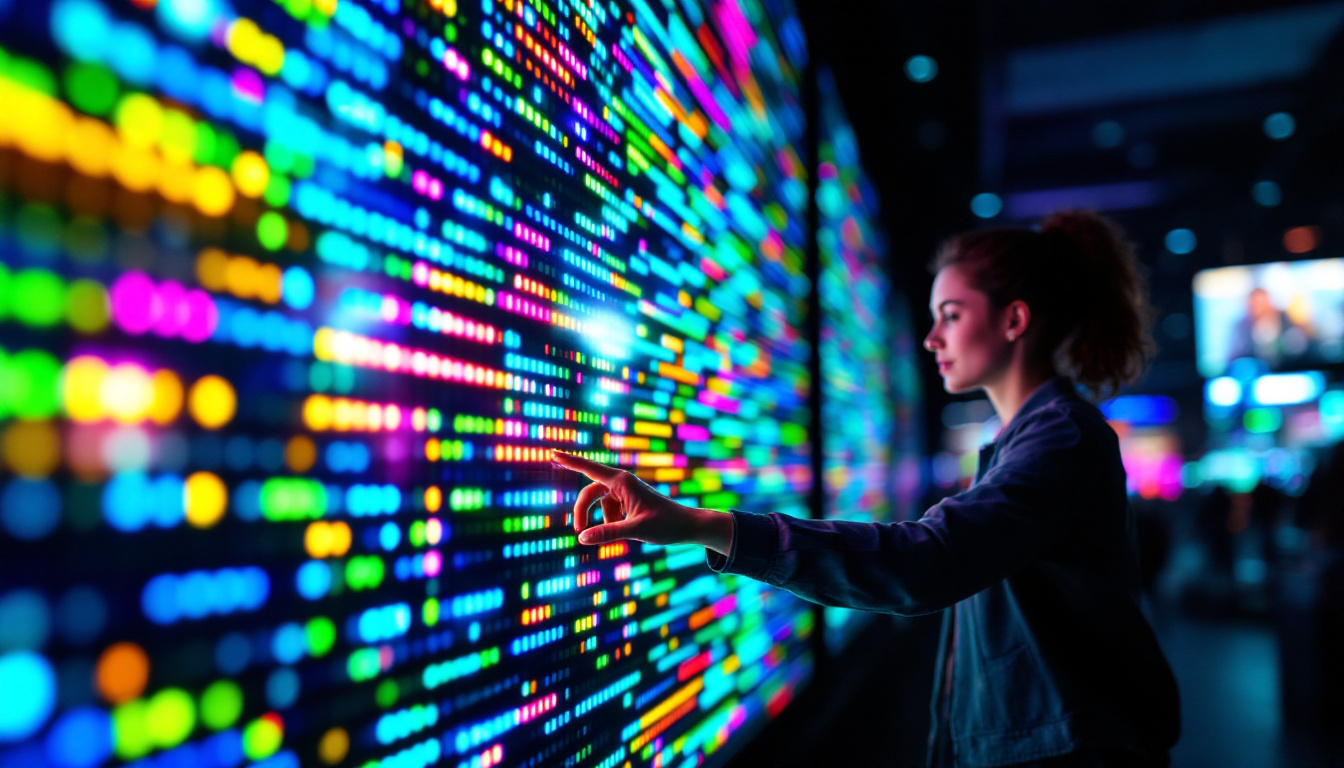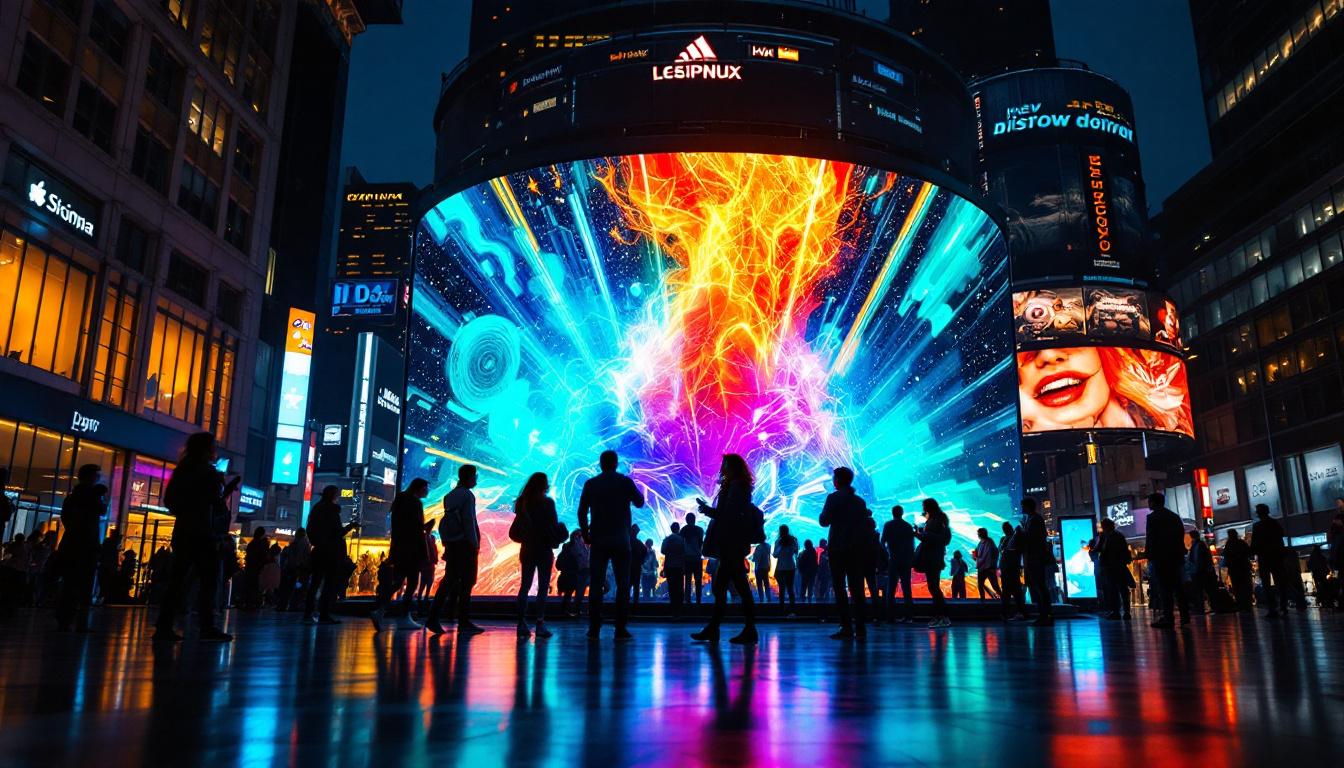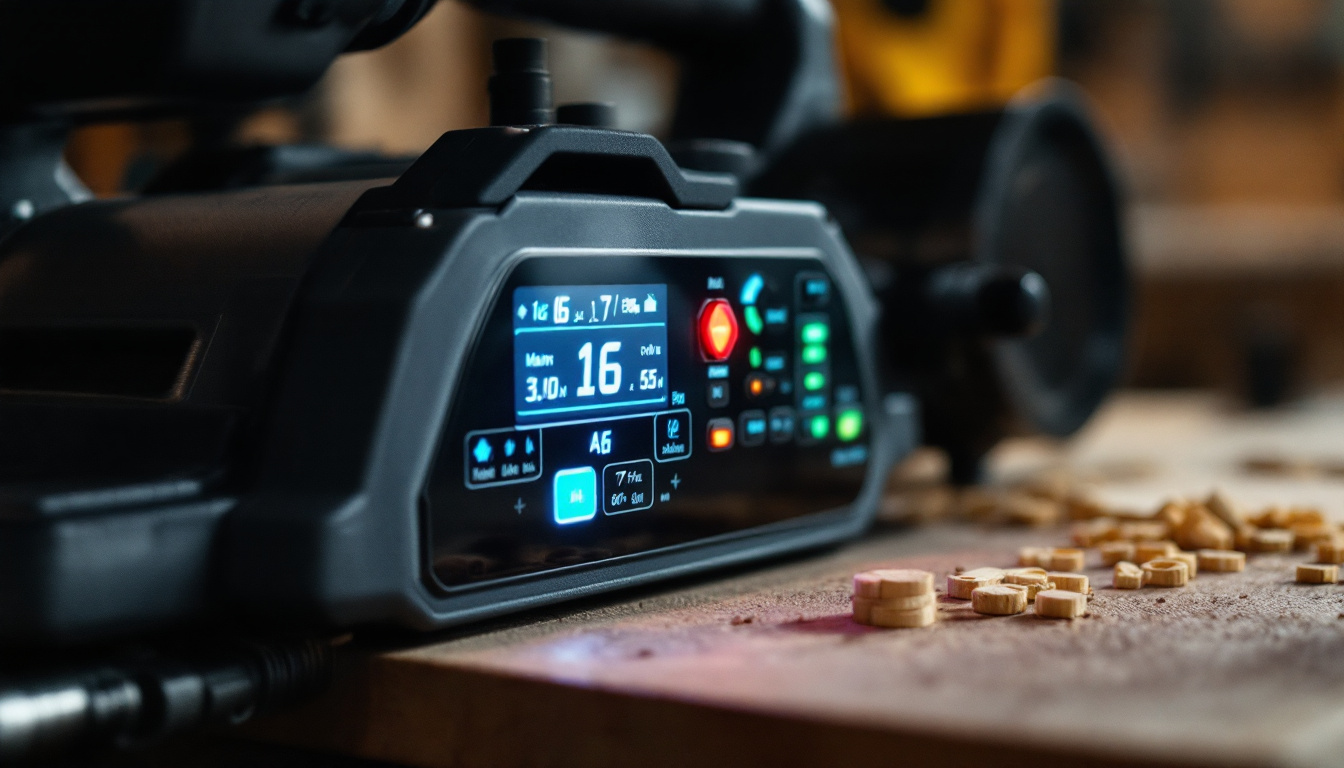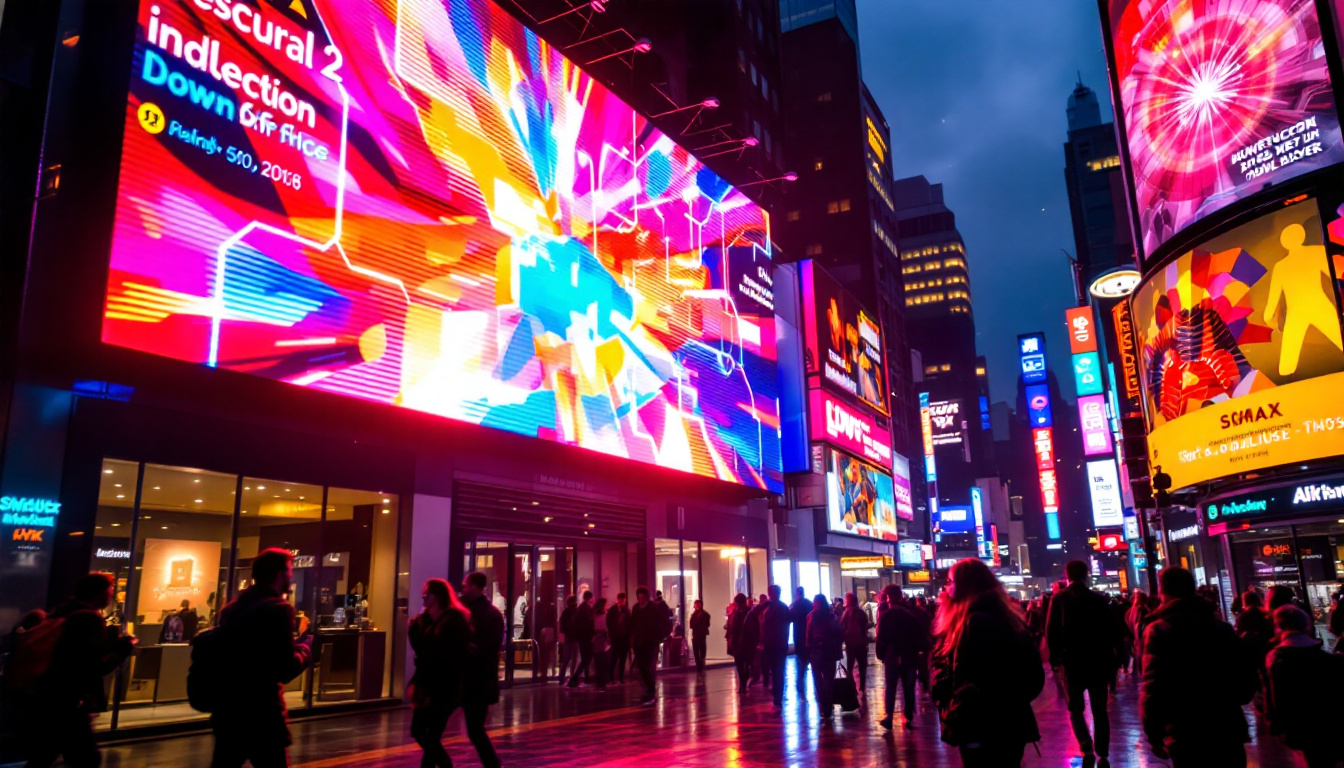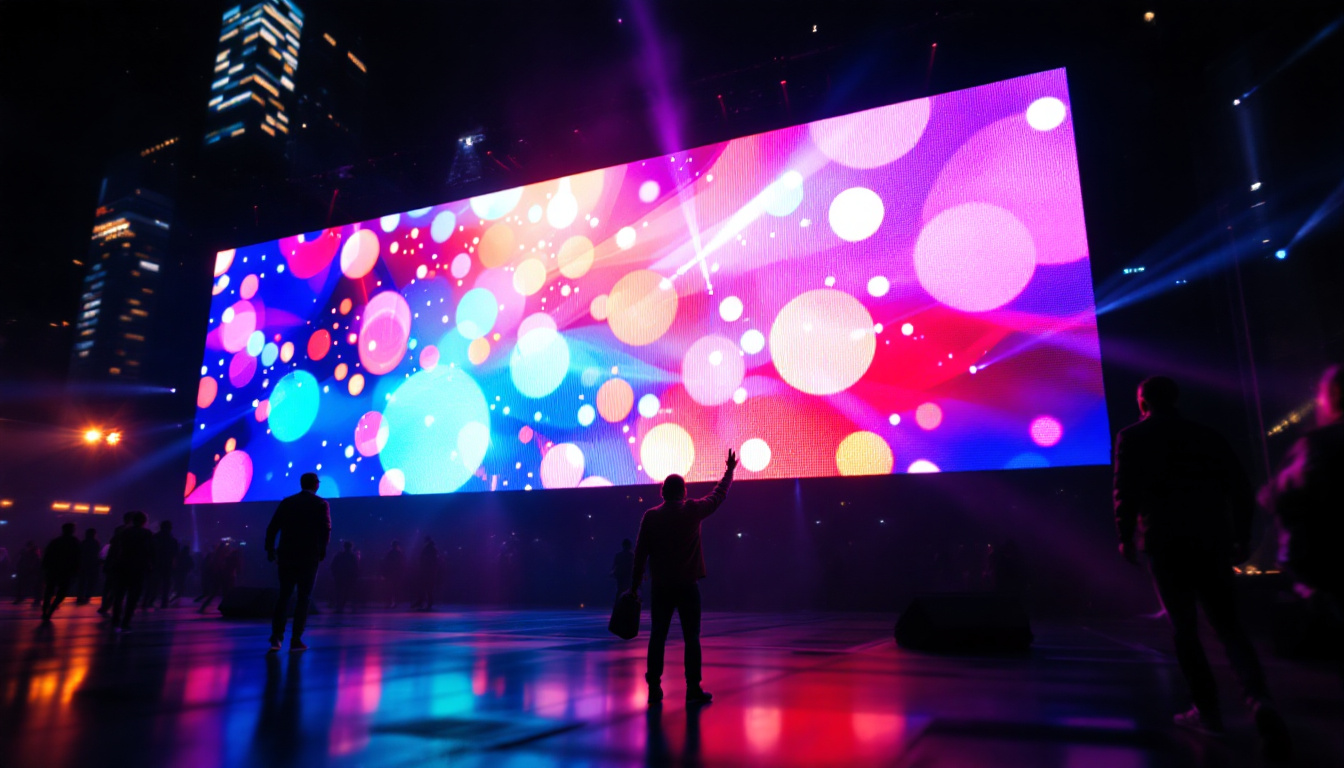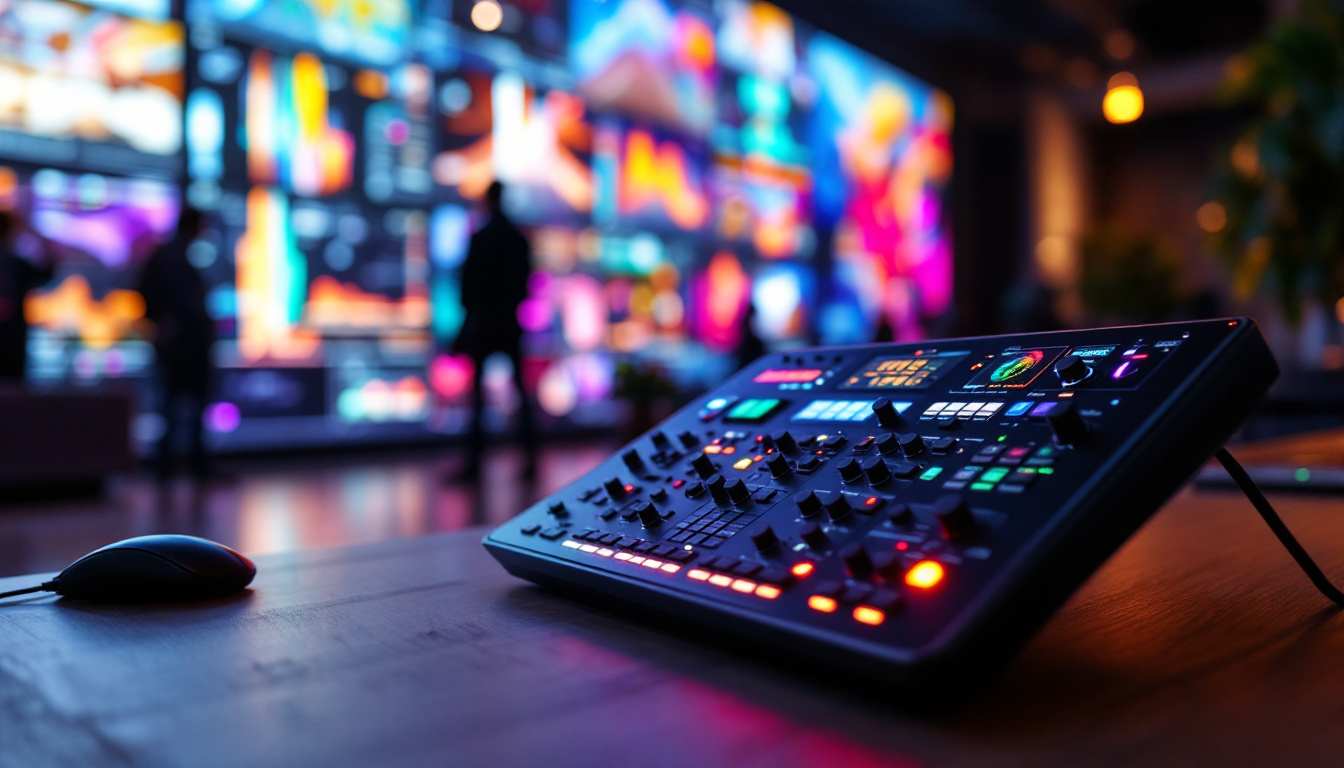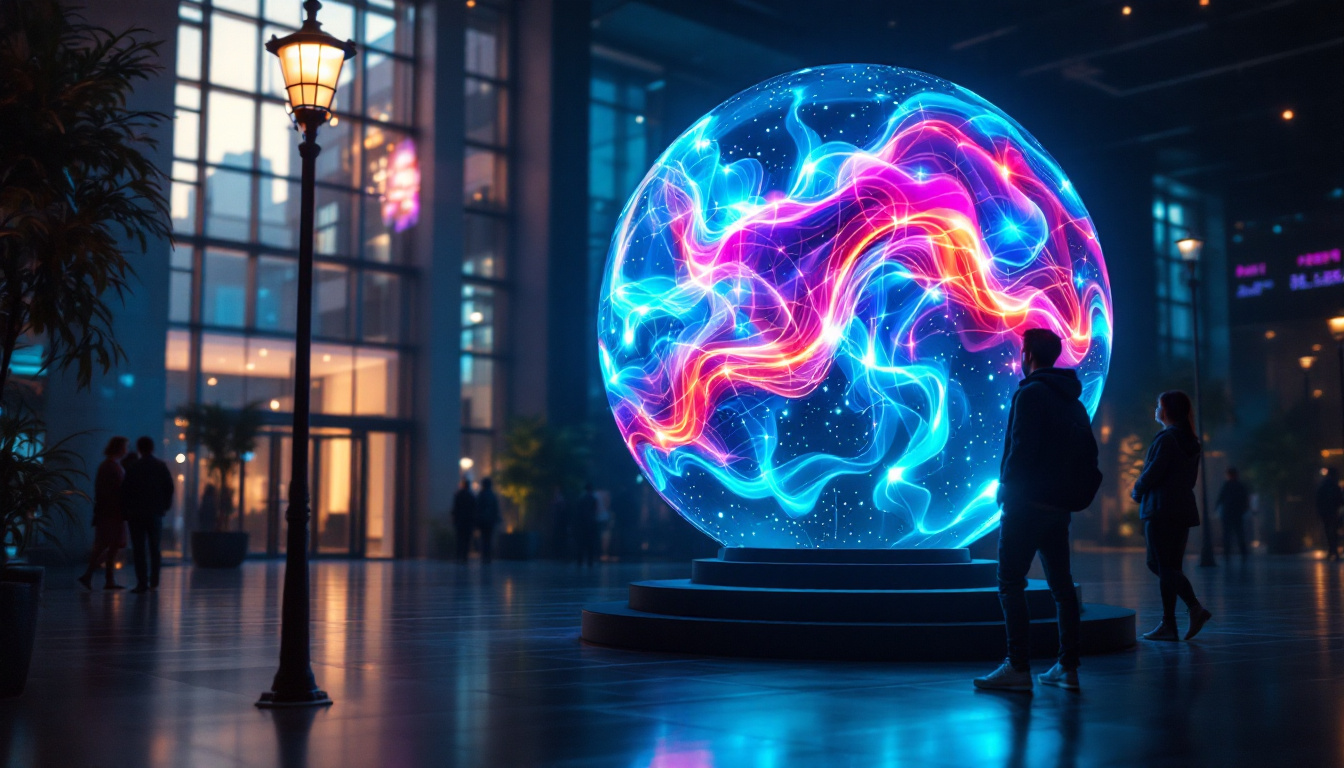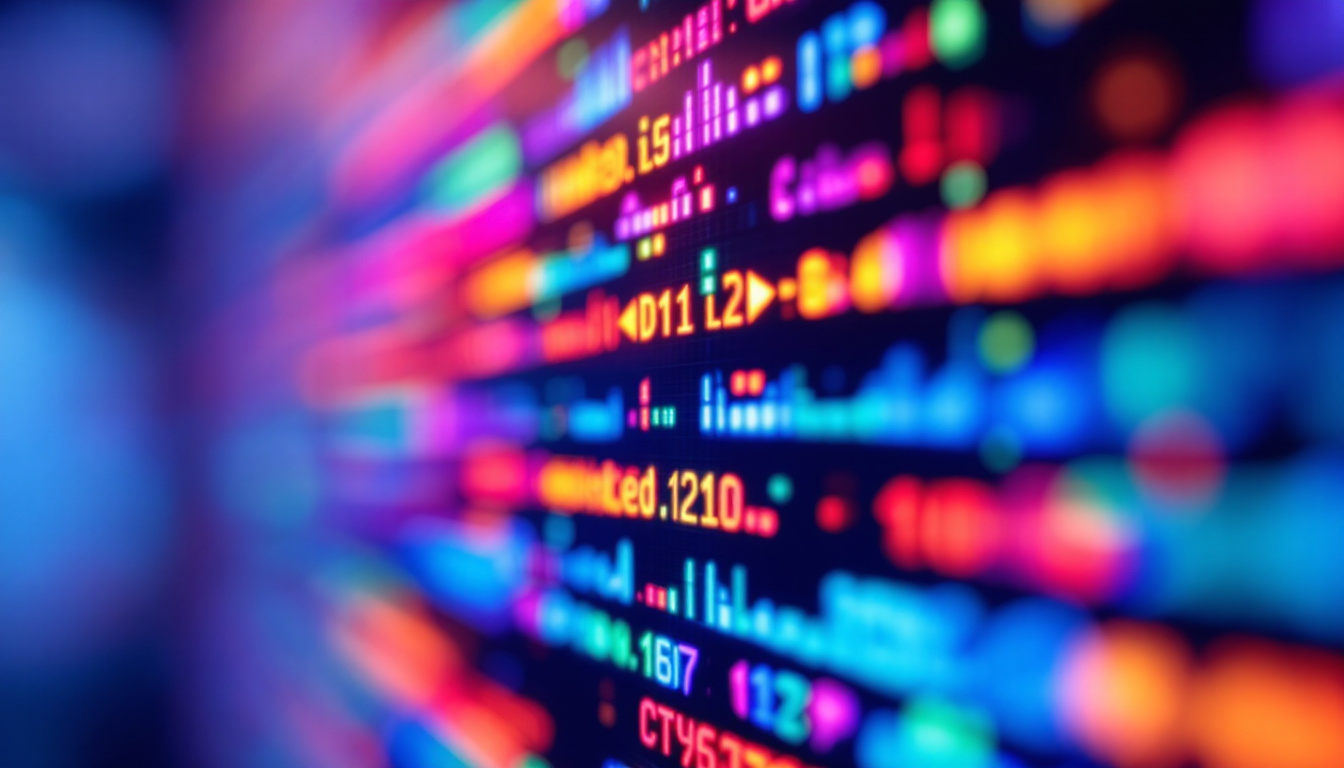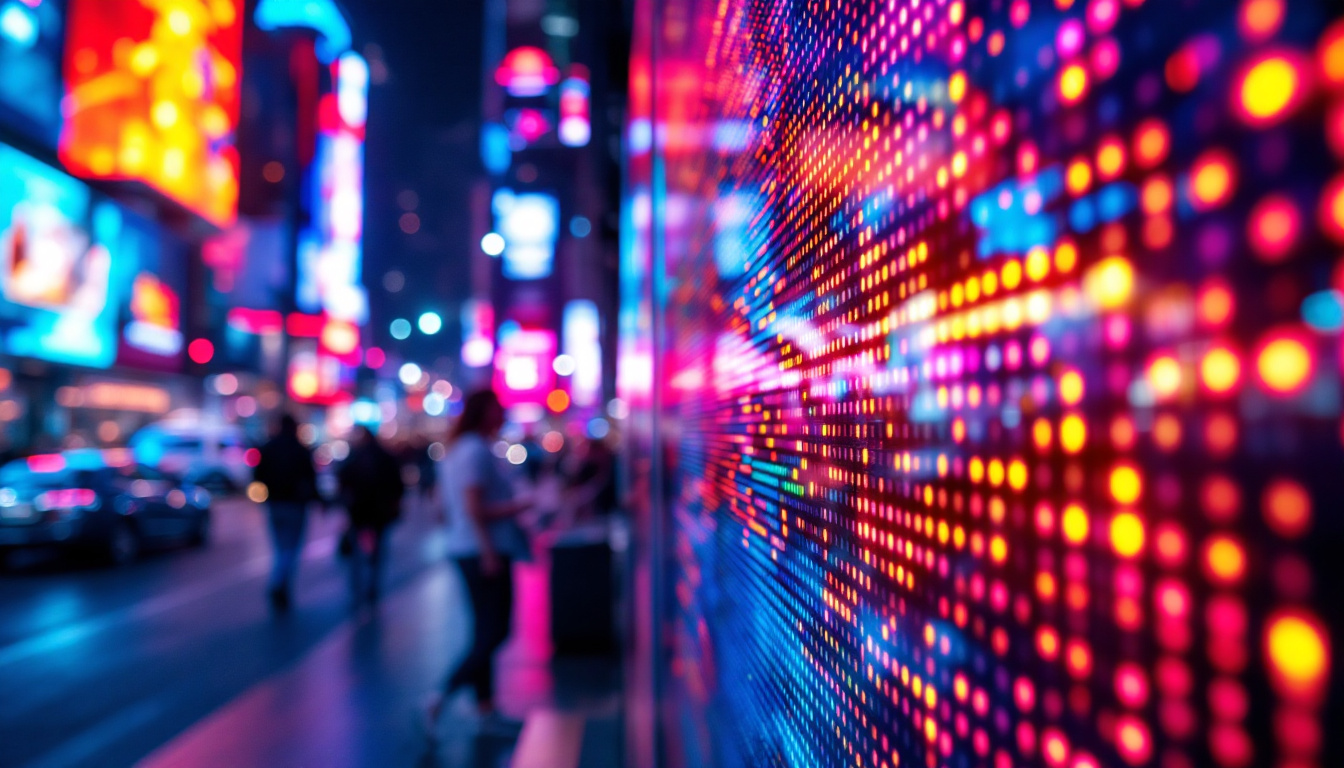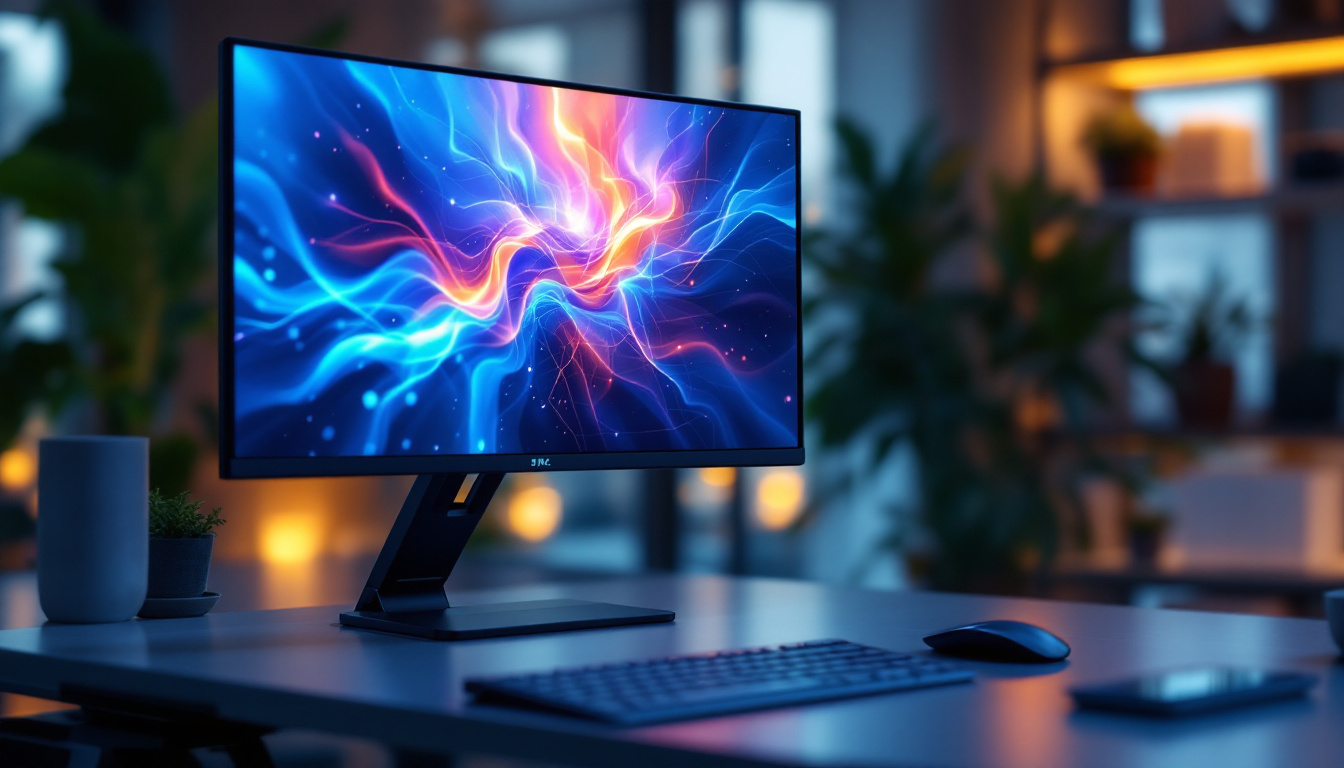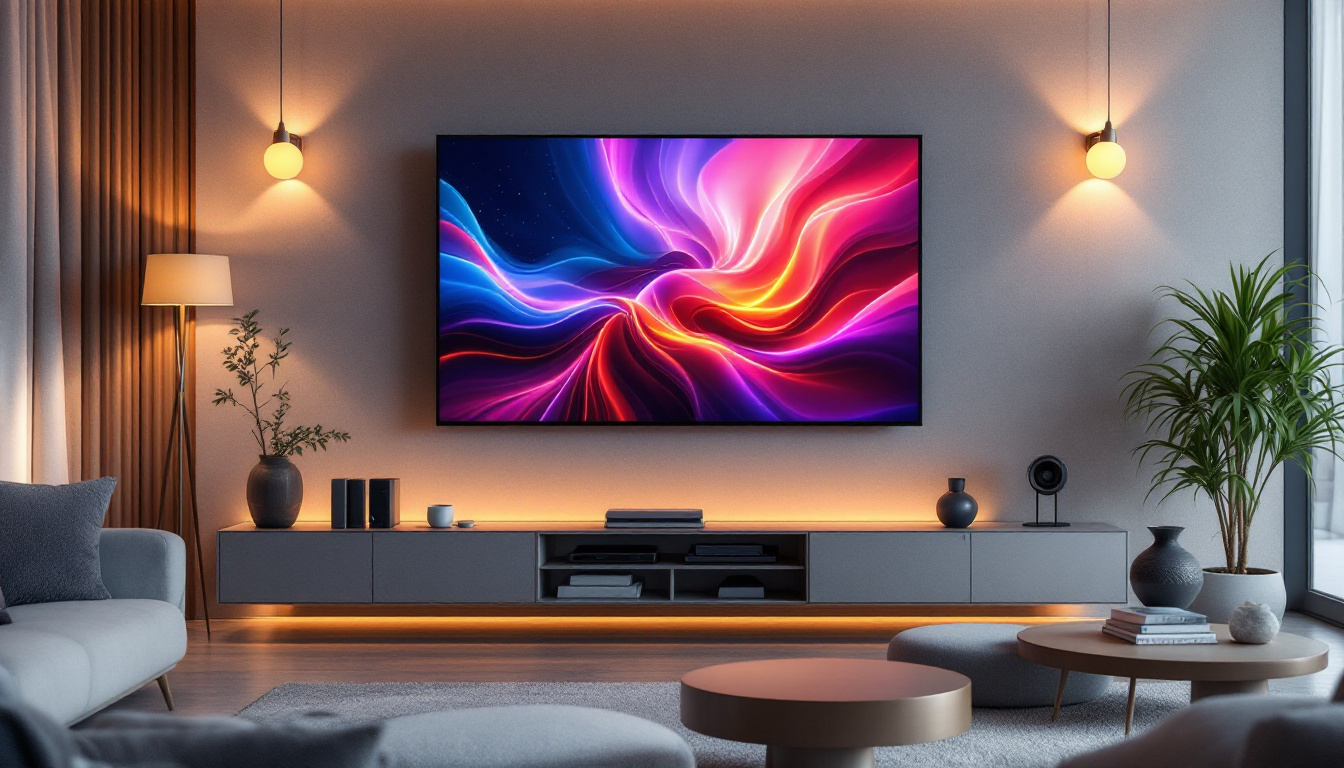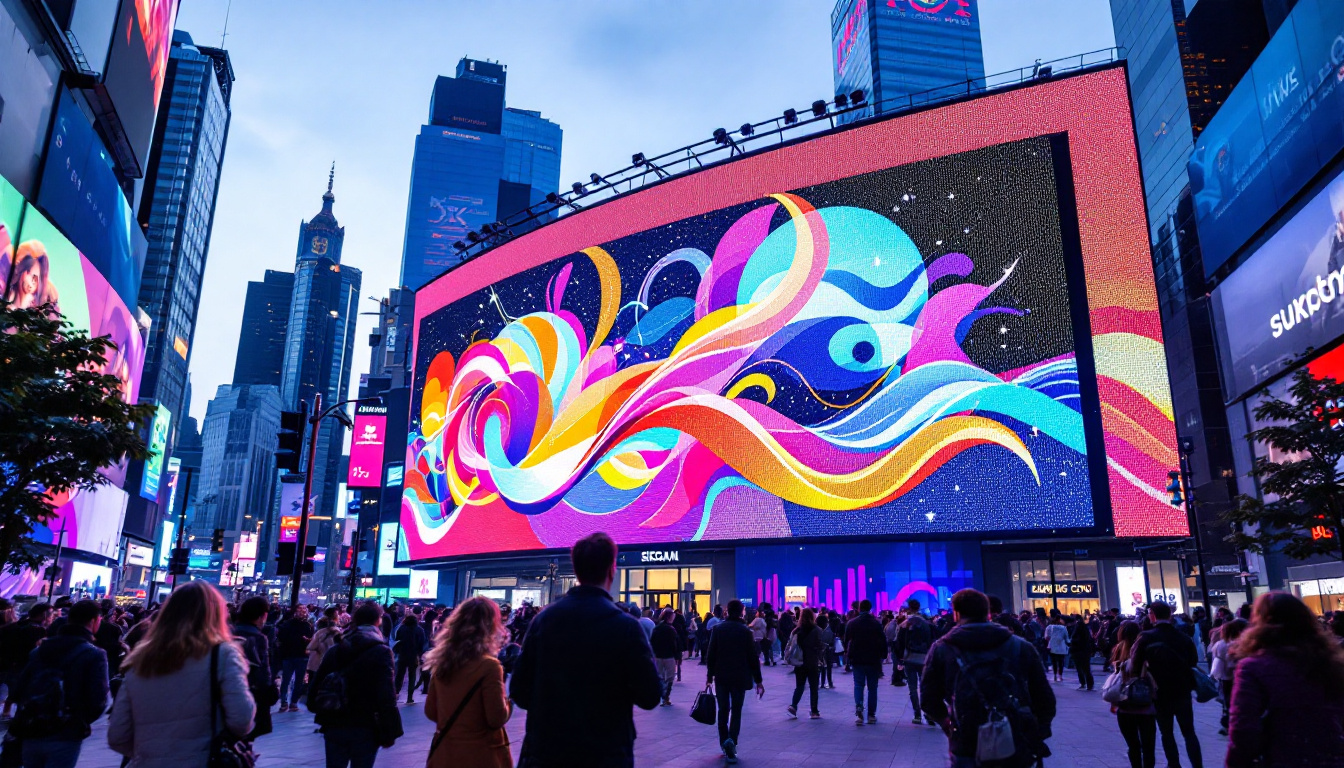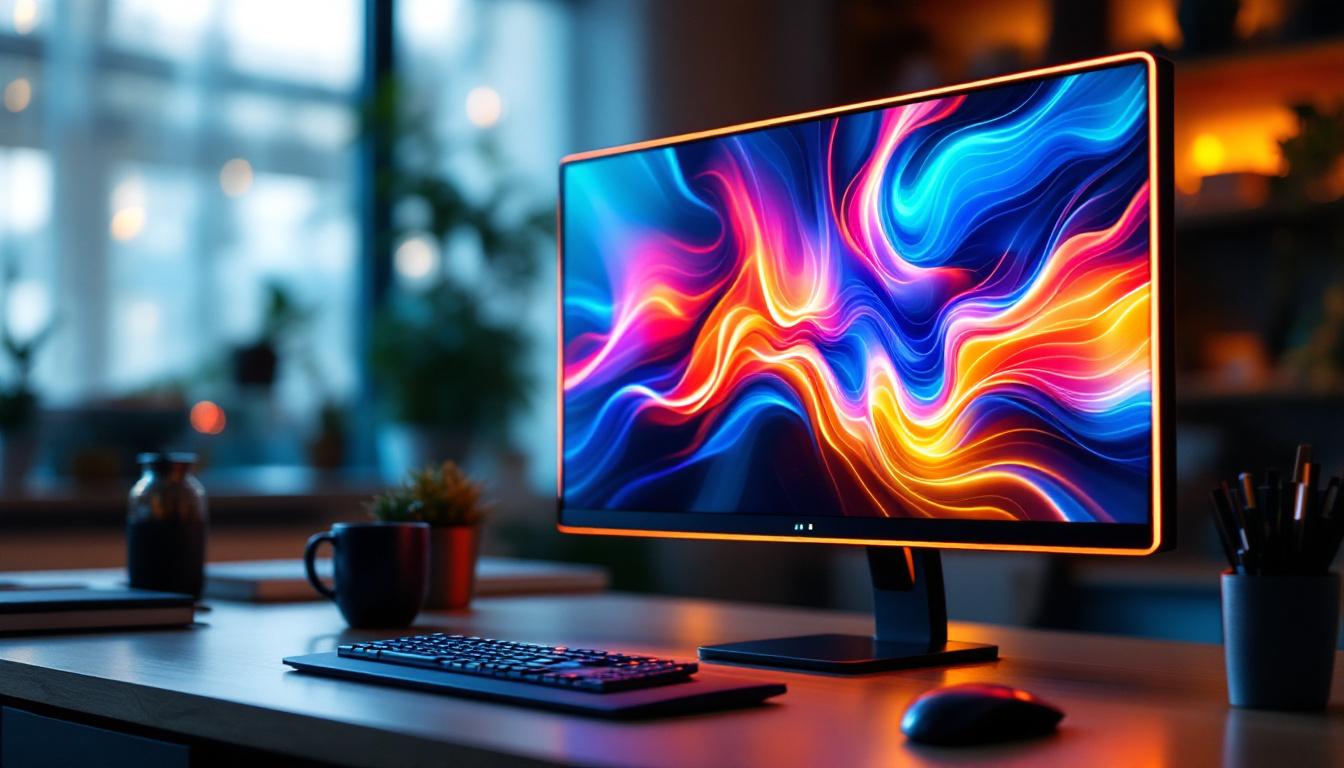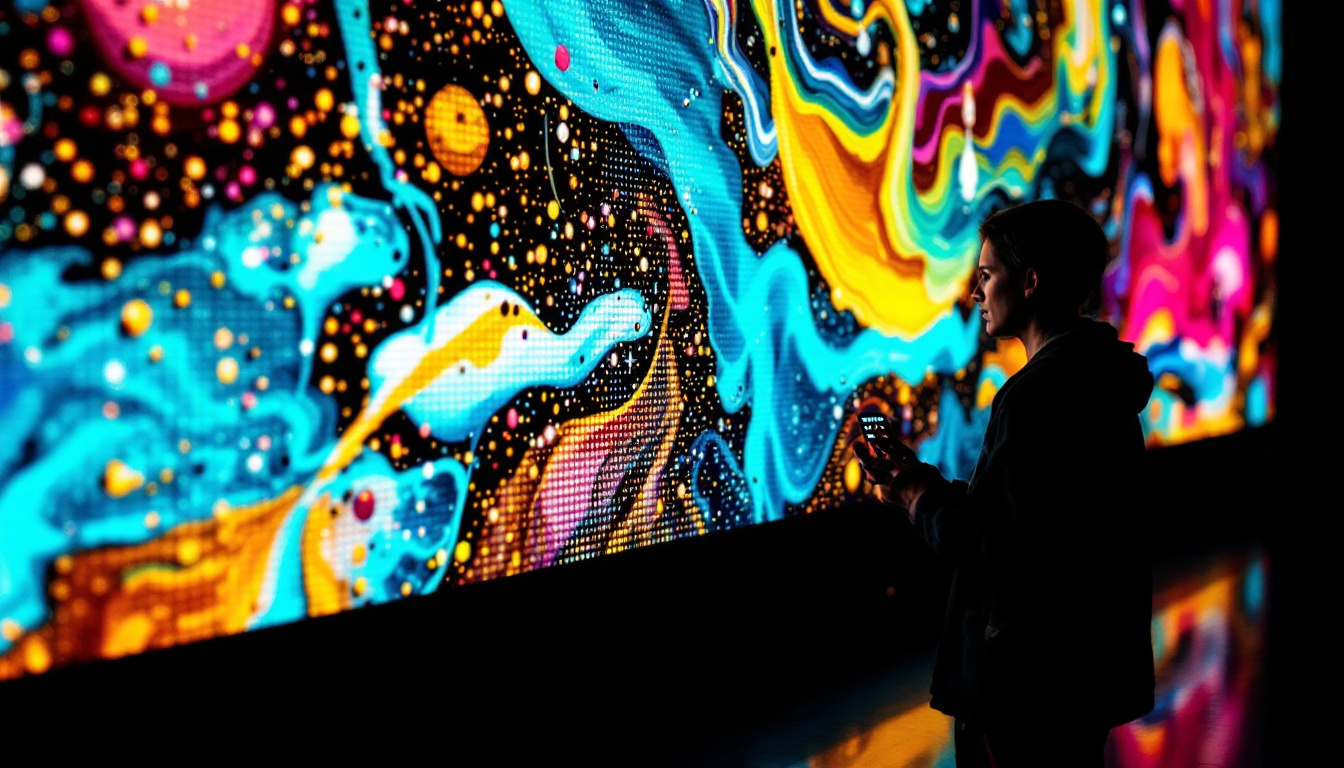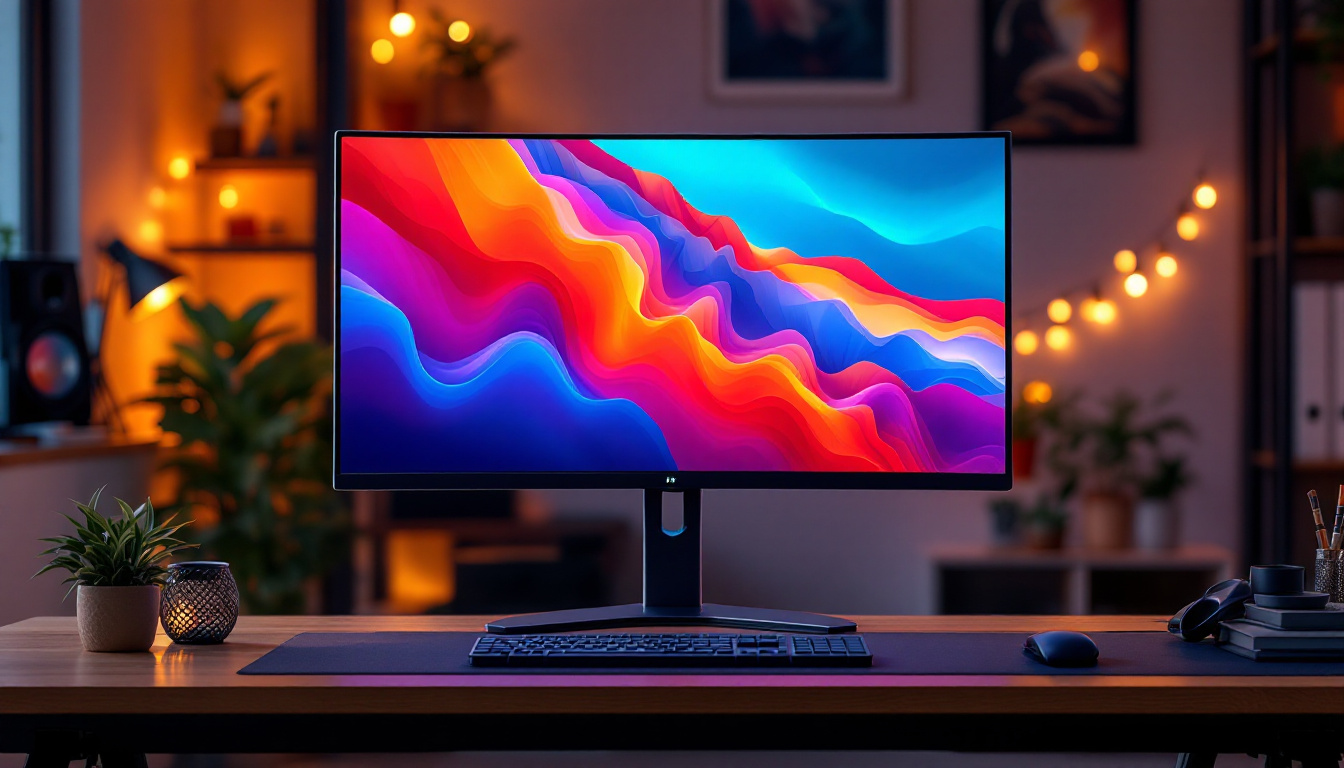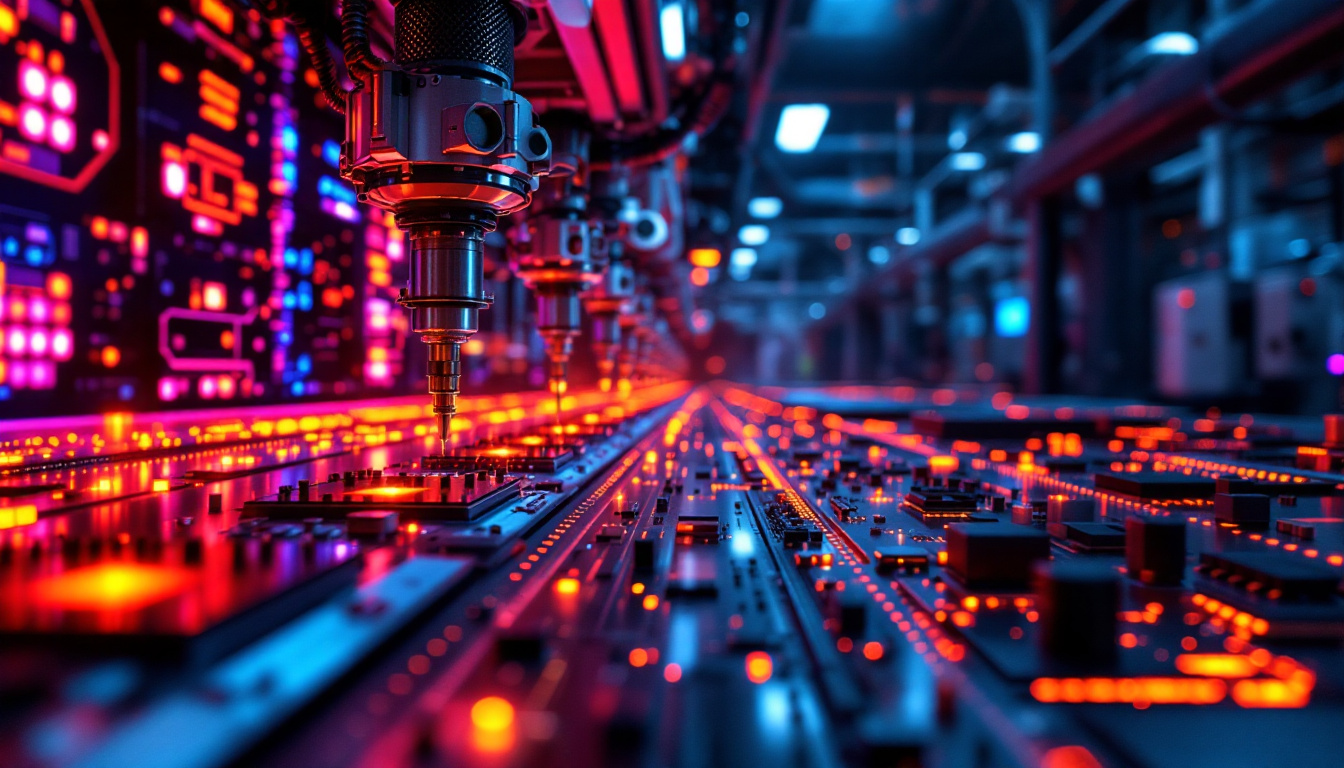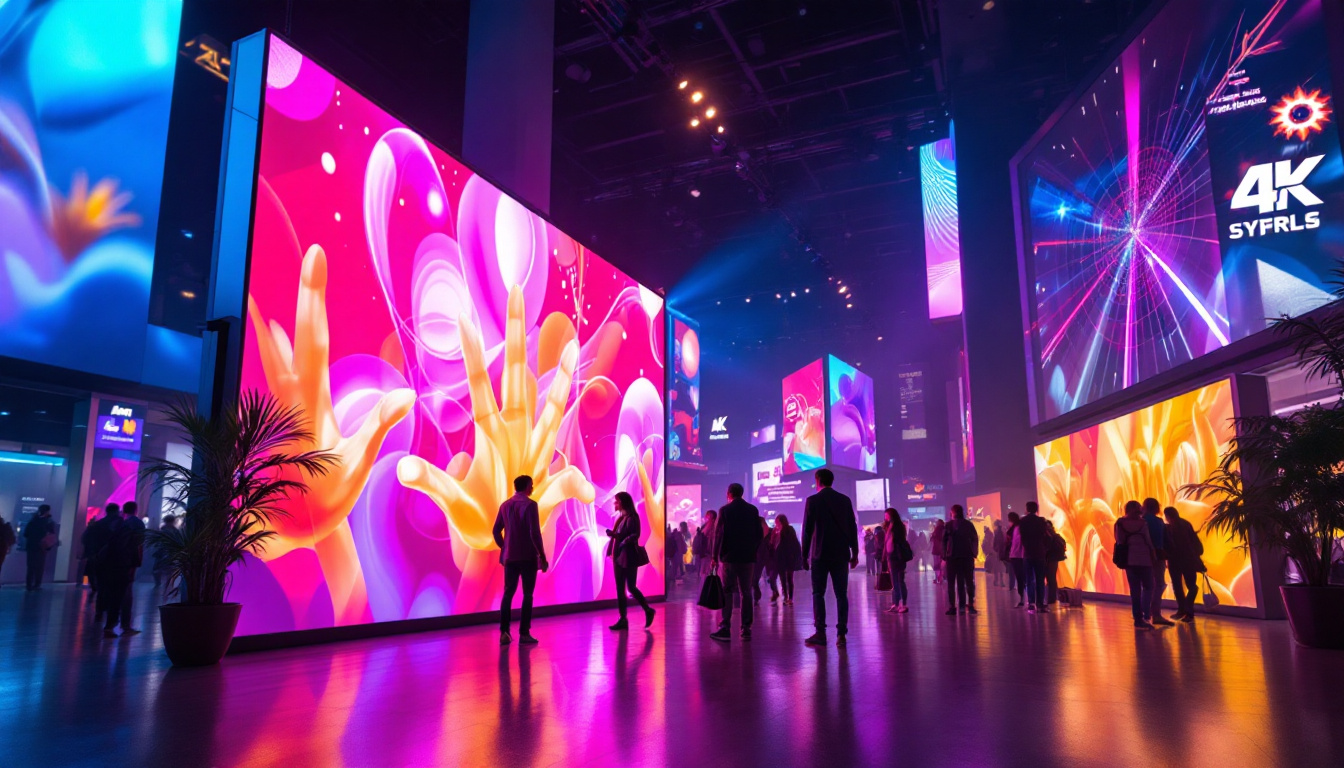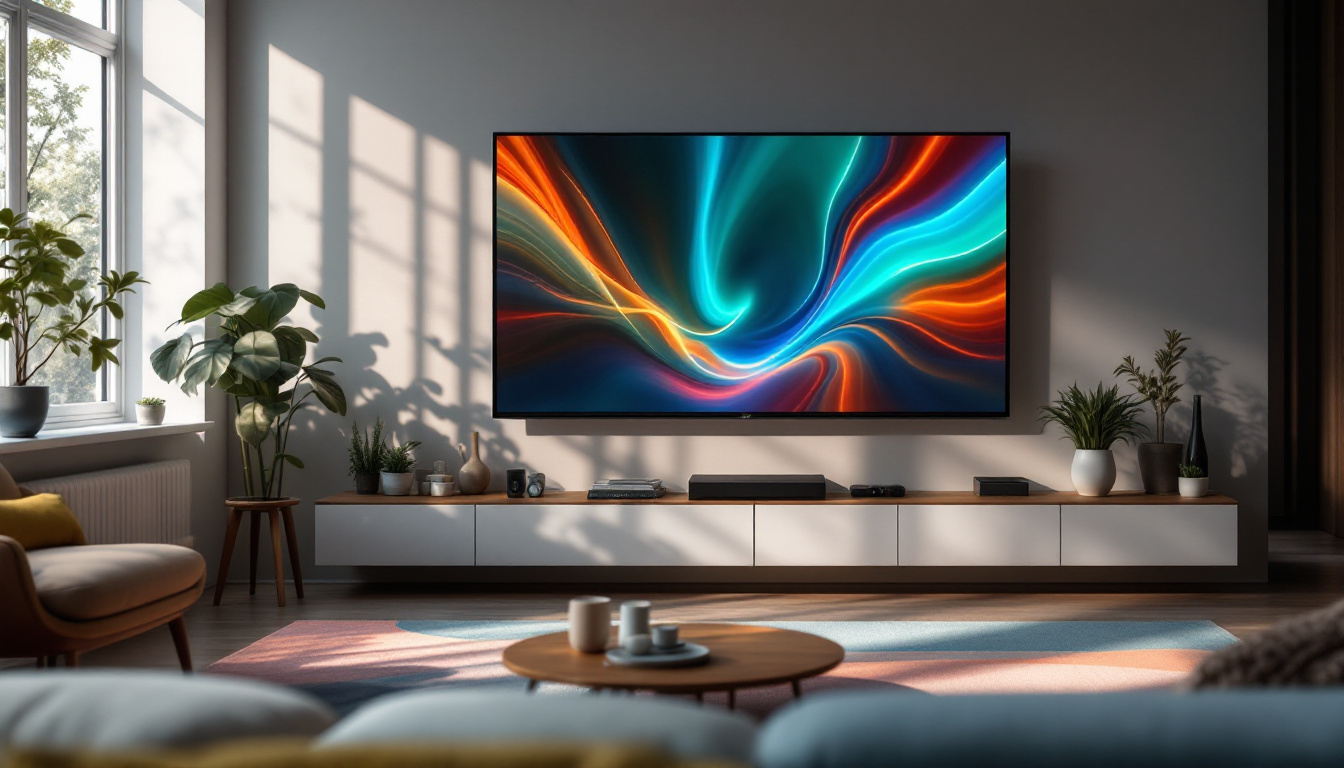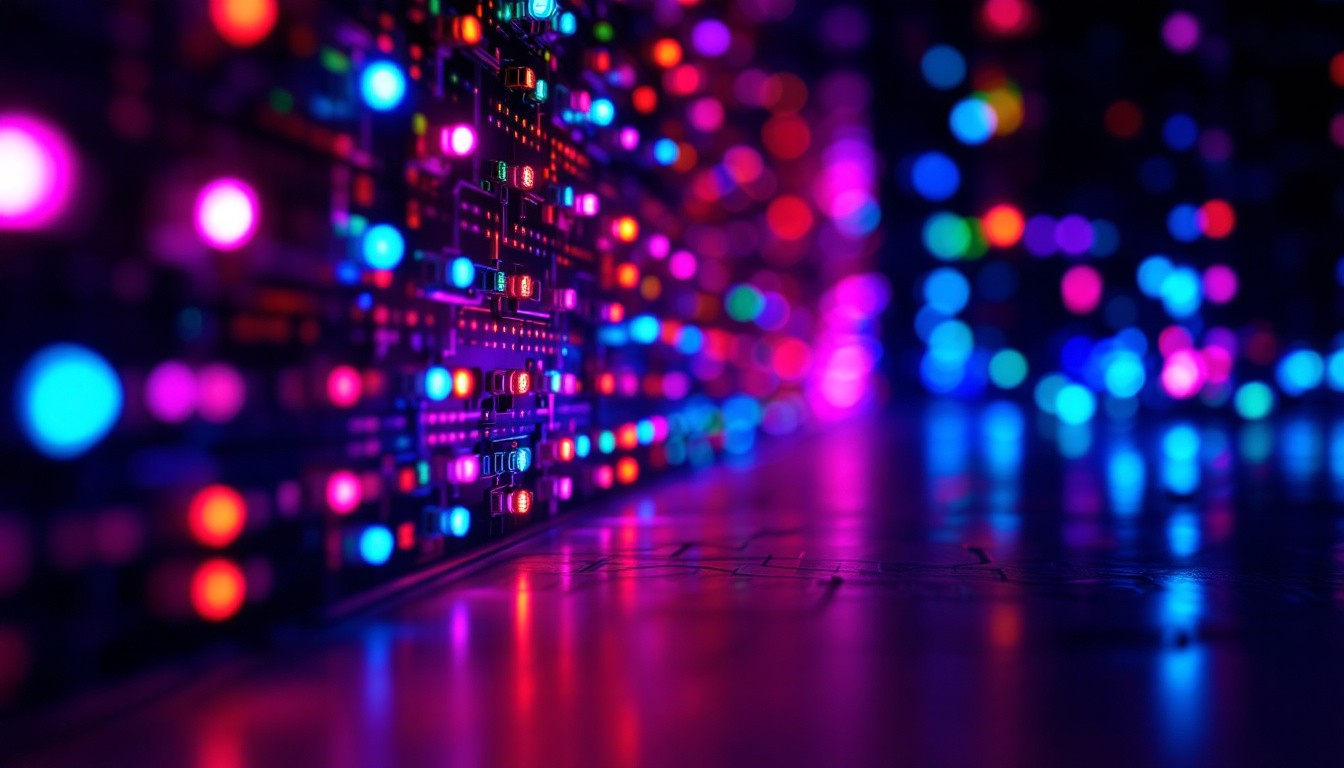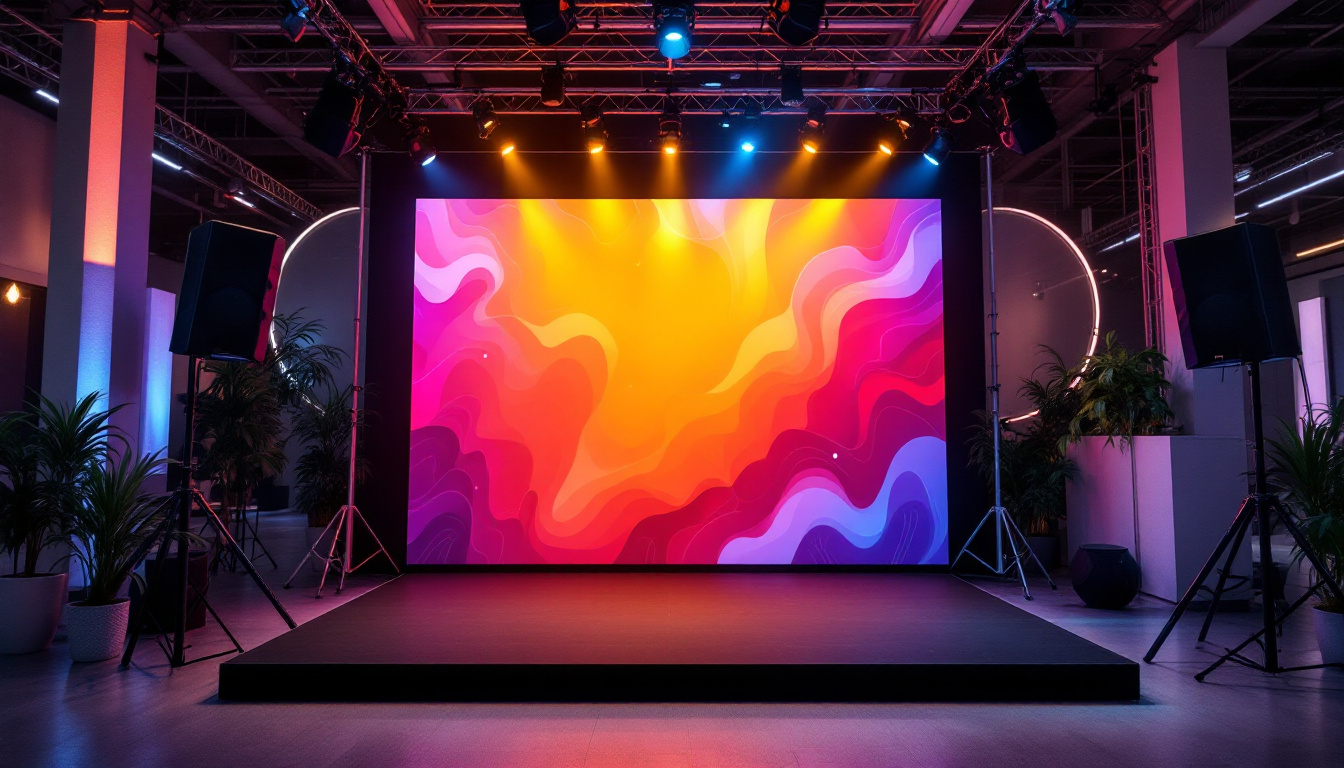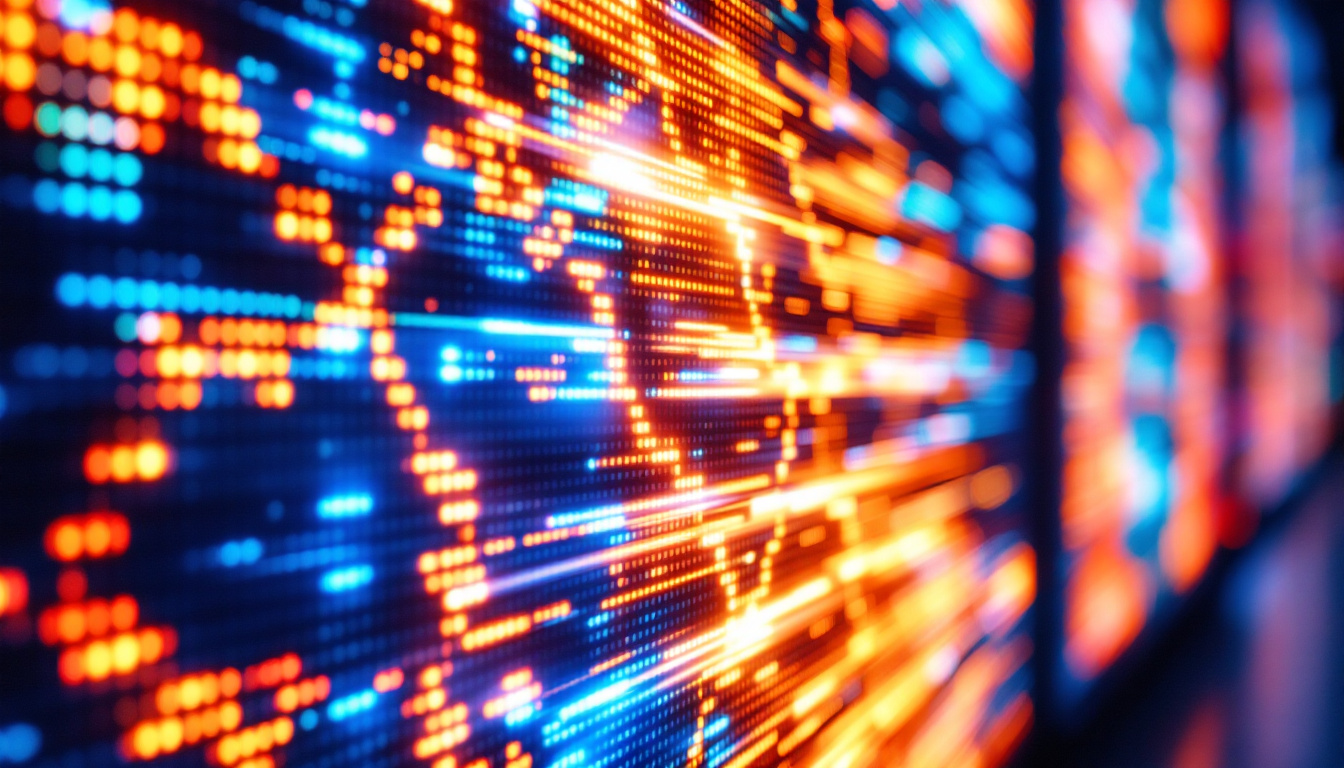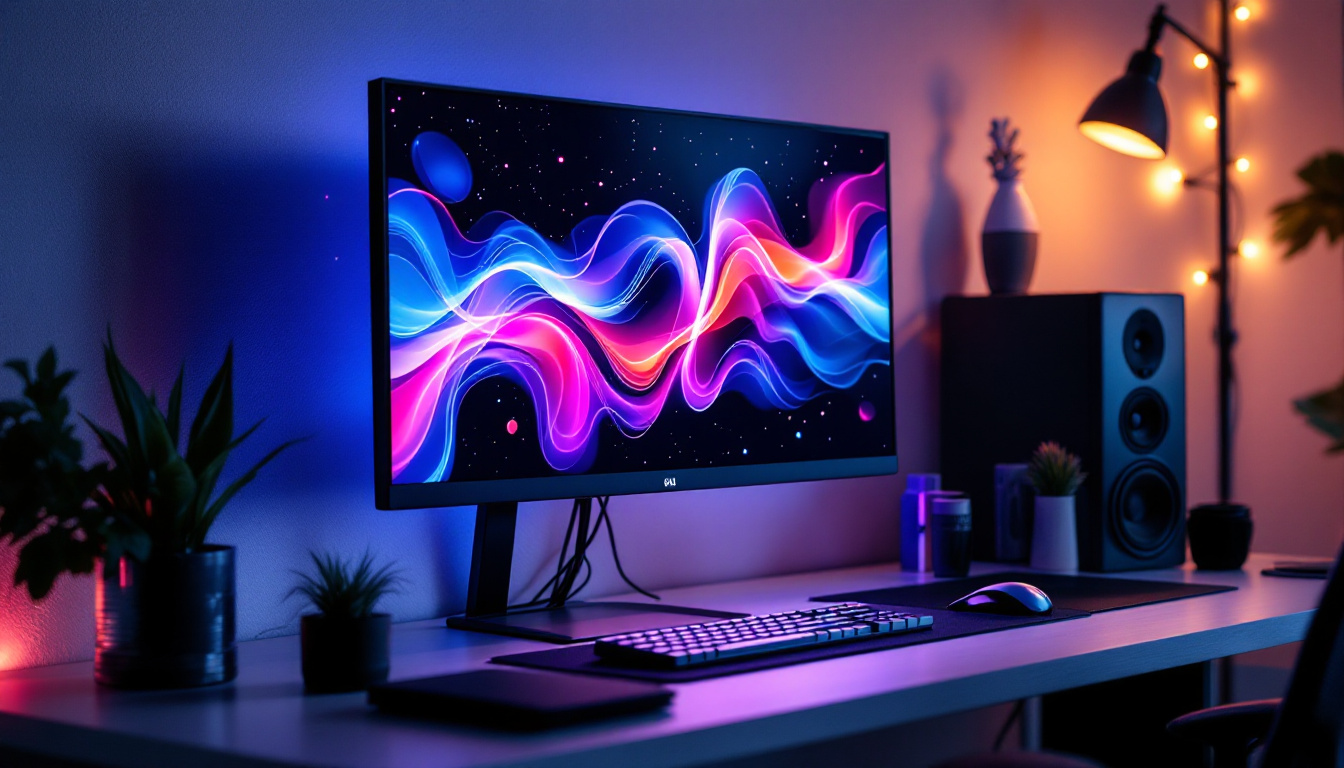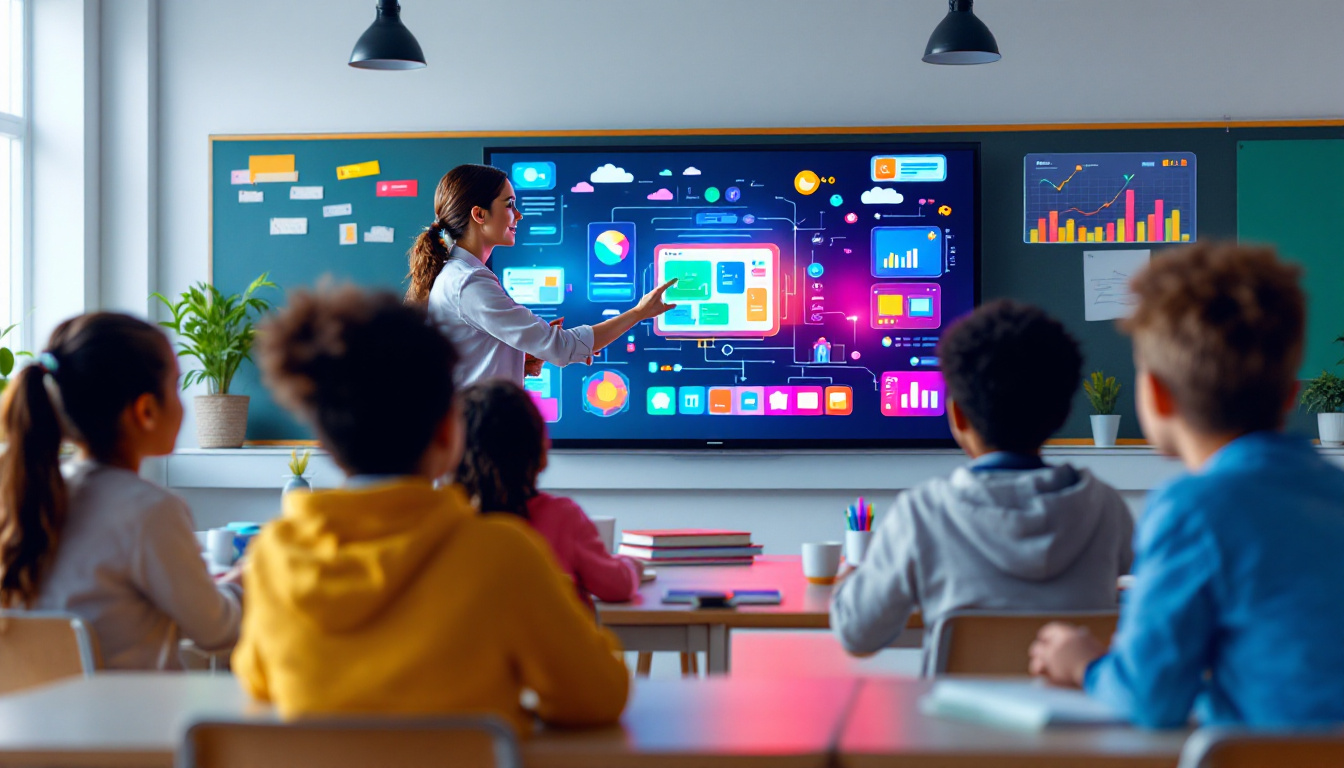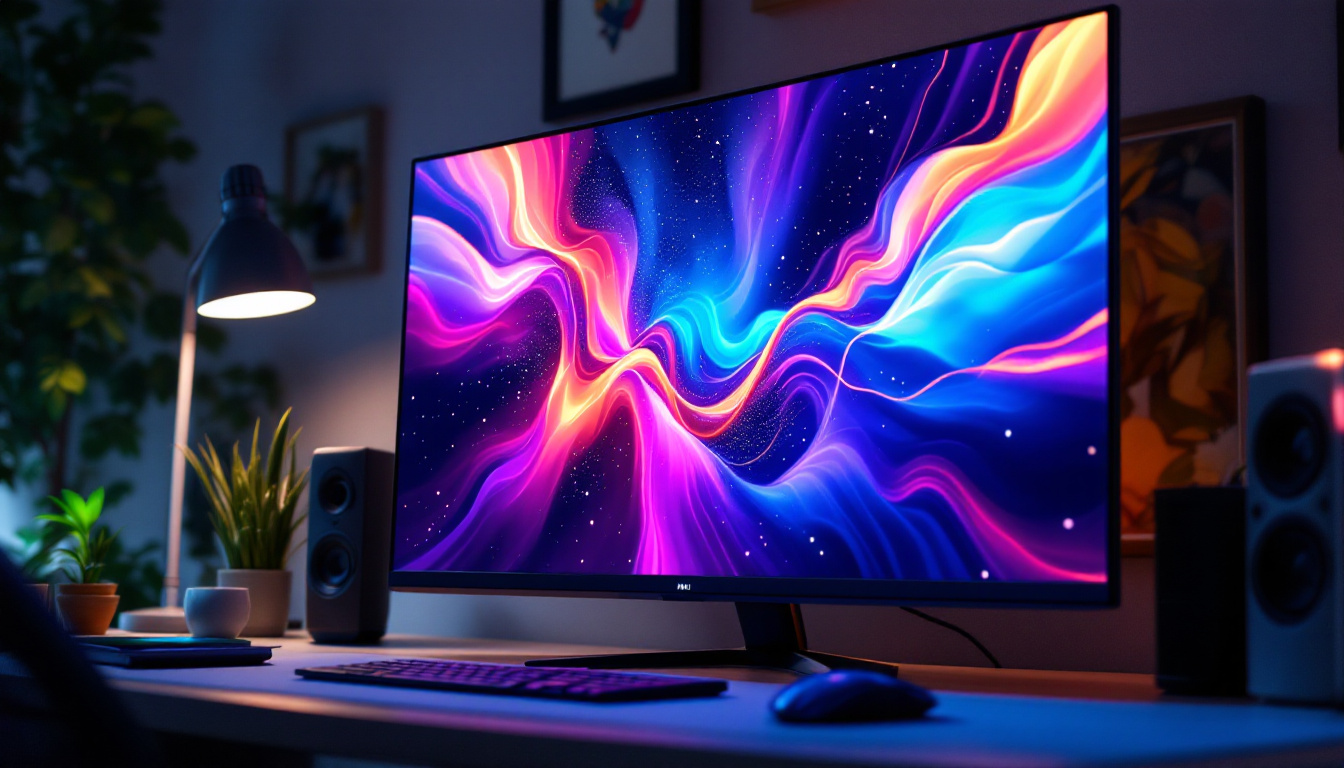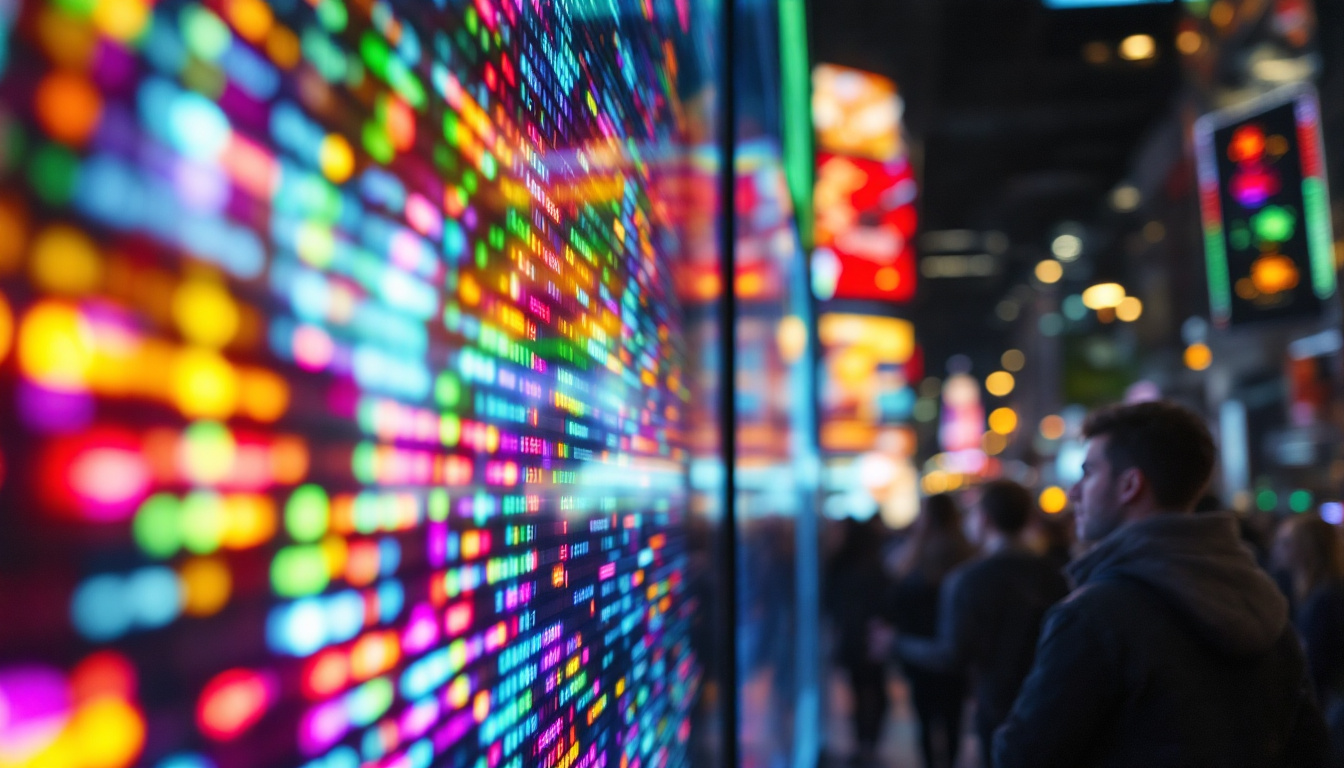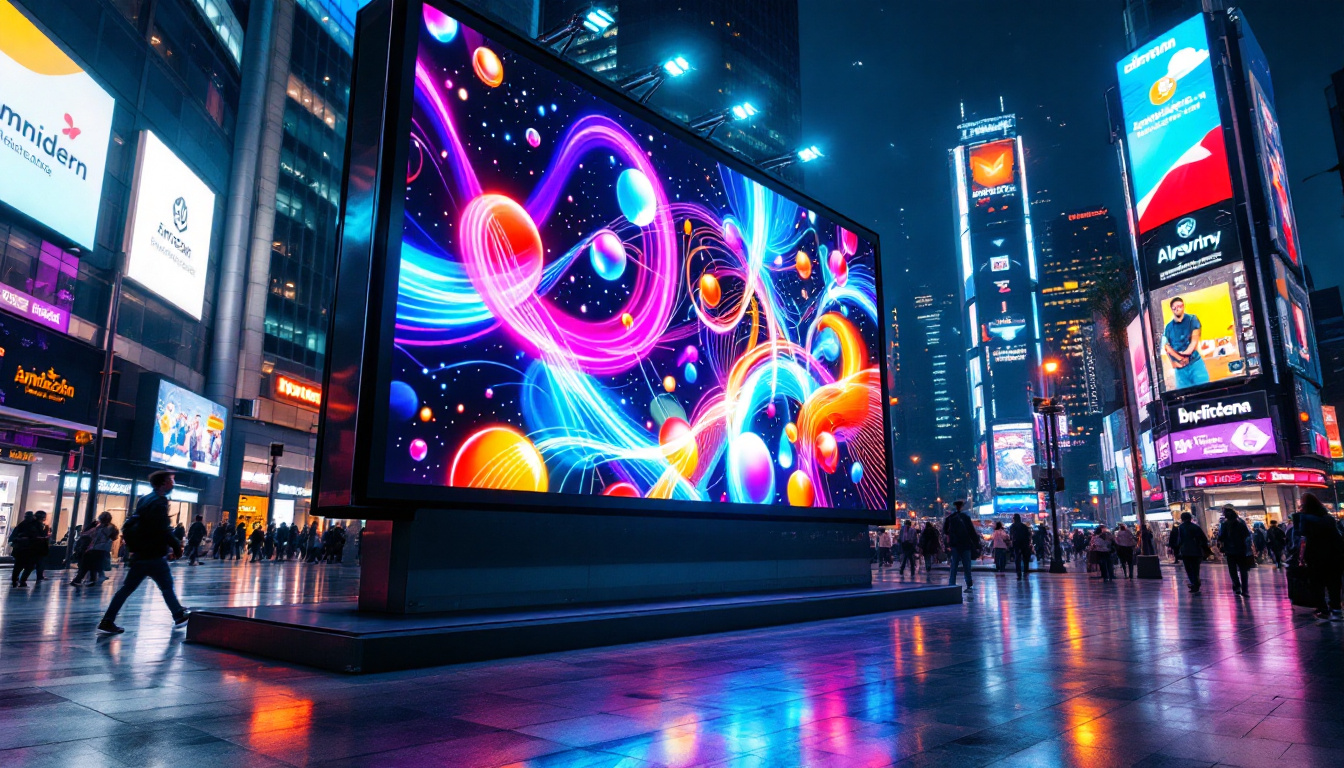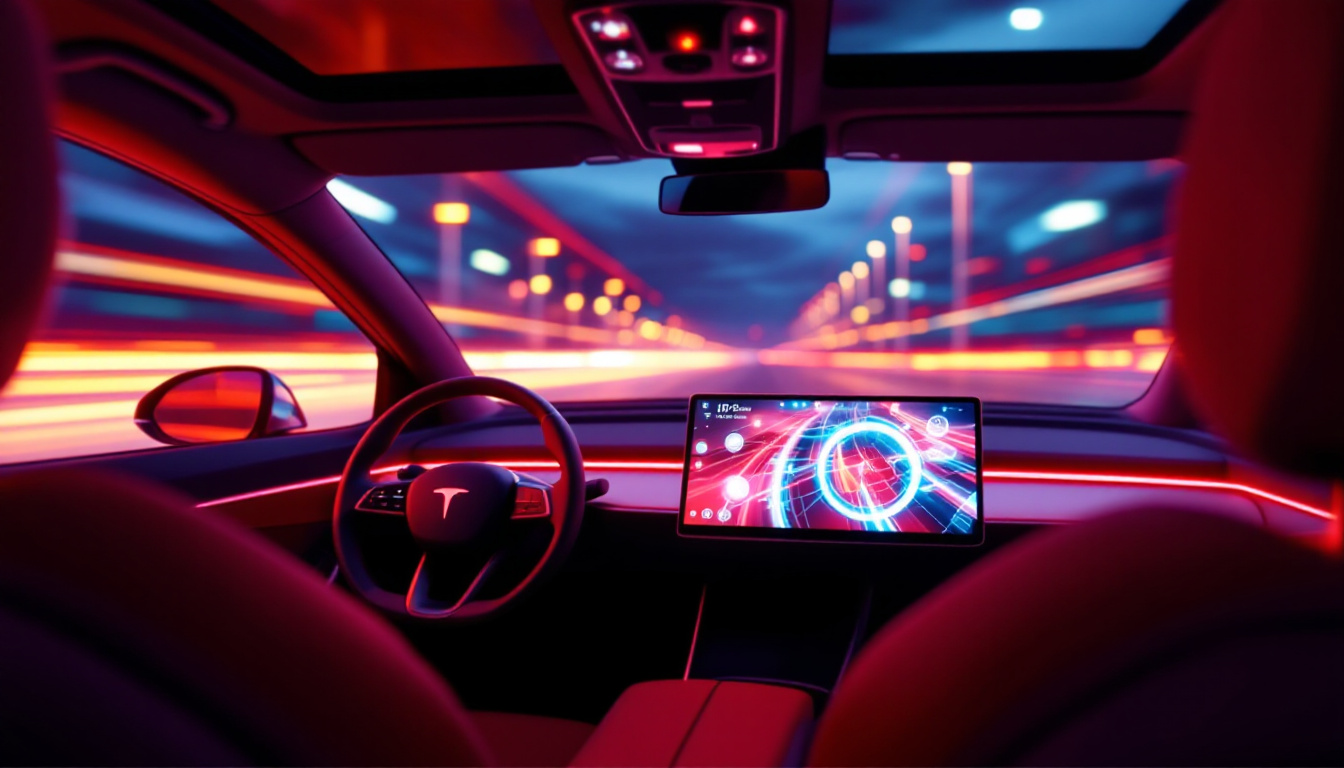In the ever-evolving world of technology, LED displays have emerged as a staple in various applications, from advertising to entertainment. One innovative concept that has gained traction is the Ouchscreen, a term that encapsulates the unique features and functionalities of LED displays. This article delves into the intricacies of Ouchscreens, exploring their technology, applications, and benefits.
Understanding LED Technology
LED, or Light Emitting Diode, technology has revolutionized the way displays are designed and utilized. Unlike traditional LCD screens, which rely on backlighting, LED displays generate their own light, resulting in brighter and more vibrant images. This innovation has not only enhanced the viewing experience but also reduced energy consumption, making LED technology a more sustainable choice for consumers and businesses alike.
The fundamental principle behind LED technology is the electroluminescence of semiconductors. When an electric current passes through a semiconductor material, it emits light. This process allows for a wide range of colors and brightness levels, making LED displays highly versatile. The ability to control the intensity and color of light emitted by these diodes has opened new avenues in various fields, from entertainment to advertising, where dynamic visuals are crucial for engagement.
The Components of LED Displays
At the core of LED displays are several key components that work in harmony to produce stunning visuals. These include:
- LED Chips: The heart of the display, these chips emit light when energized. They come in different sizes and configurations to suit various applications, from tiny indicators on devices to large-scale screens used in stadiums.
- Driver ICs: Integrated circuits that control the brightness and color of the LEDs. These chips are essential for ensuring that the display can adapt to different lighting conditions and user preferences.
- Power Supply: Provides the necessary voltage and current to the display. A well-designed power supply is crucial for maintaining the longevity and performance of the display, as fluctuations in power can lead to diminished image quality.
- Control System: Manages the input signals and ensures the correct images are displayed. This system is responsible for interpreting data from various sources, allowing for seamless integration with computers, cameras, and other devices.
Types of LED Displays
LED displays can be categorized into various types based on their application and technology. The most common types include:
- Direct View LED (DVLED): These displays are made up of individual LED modules that can be combined to create large screens. They are often used for outdoor advertising and large events due to their high brightness and visibility in daylight.
- LED Backlit LCD: This type uses LED lights as a backlight for traditional LCD screens, enhancing brightness and color accuracy. This hybrid technology has become popular in televisions and computer monitors, providing a balance between performance and cost.
- Organic LED (OLED): A more advanced technology where organic compounds emit light, allowing for thinner displays with better contrast. OLED displays are increasingly favored in high-end smartphones and televisions due to their ability to produce deep blacks and vibrant colors without the need for a backlight.
Additionally, there are emerging technologies such as MicroLED, which combines the best features of OLED and traditional LED displays. MicroLEDs consist of tiny, self-emitting pixels that can deliver exceptional brightness and color accuracy while being energy efficient. This technology is still in its infancy but holds tremendous potential for the future of display technology, promising even more immersive experiences in gaming, virtual reality, and beyond.
As LED technology continues to evolve, we are witnessing a shift towards more interactive and adaptive displays. Innovations such as transparent LED screens and flexible displays are paving the way for new applications in architecture and design, allowing for creative installations that blend seamlessly with their surroundings. The versatility of LED technology not only enhances visual experiences but also inspires new ways to communicate and connect with audiences in an increasingly digital world.
The Emergence of Ouchscreen
The term Ouchscreen refers to a specific type of LED display that incorporates touch-sensitive technology, allowing users to interact with the screen directly. This innovative feature has transformed the way information is presented and consumed in various environments.
Ouchscreens are particularly popular in retail, education, and entertainment sectors, where user engagement is crucial. By enabling touch interactions, these displays create a more immersive experience for users, leading to increased retention of information and enhanced customer satisfaction.
How Ouchscreens Work
Ouchscreens combine LED display technology with touch-sensitive layers. This integration allows the screen to detect touch inputs, which are then translated into commands for the display. The technology behind Ouchscreens typically involves:
- Capacitive Touch Sensors: These sensors detect touch through changes in electrical fields, allowing for multi-touch capabilities.
- Infrared Touch Technology: This method uses infrared light beams to detect touch, providing high accuracy and responsiveness.
- Optical Touch Technology: Utilizing cameras or optical sensors, this technology tracks the position of touch, offering a seamless interaction experience.
Applications of Ouchscreens
The versatility of Ouchscreens makes them suitable for a wide range of applications. Some notable examples include:
- Interactive Kiosks: Ouchscreens are commonly found in kiosks at malls, airports, and museums, providing users with information and services at their fingertips.
- digital signage: Retailers use Ouchscreens to engage customers with interactive advertisements and promotions, enhancing the shopping experience.
- Education: In classrooms, Ouchscreens facilitate interactive learning, allowing students to engage with educational content dynamically.
Benefits of Ouchscreens
Ouchscreens offer numerous advantages over traditional display technologies, making them an appealing choice for many businesses and organizations. Some of the key benefits include:
Enhanced User Engagement
One of the standout features of Ouchscreens is their ability to foster user engagement. By allowing direct interaction, users are more likely to explore content, leading to a deeper understanding and retention of information.
In retail settings, for instance, customers can browse products, access promotions, and even complete purchases directly from the screen, creating a seamless shopping experience.
Versatility and Customization
Ouchscreens can be customized to suit various needs, whether for advertising, information dissemination, or educational purposes. Their adaptability allows businesses to tailor content to specific audiences, enhancing the effectiveness of their messaging.
Moreover, the modular nature of LED technology means that Ouchscreens can be scaled to different sizes, making them suitable for both small and large installations.
Cost-Effectiveness
While the initial investment in Ouchscreens may be higher than traditional displays, their long-term cost-effectiveness is undeniable. LED technology is energy-efficient, resulting in lower operating costs over time. Additionally, the durability of Ouchscreens means they require less frequent replacement, further reducing overall expenses.
Challenges and Considerations
Despite their many advantages, Ouchscreens are not without challenges. Understanding these potential drawbacks is essential for making informed decisions regarding their implementation.
Initial Investment
The upfront cost of Ouchscreens can be a barrier for some businesses. While the long-term savings are significant, the initial financial outlay may deter organizations with limited budgets. It is crucial to weigh the potential return on investment against the initial expenditure.
Maintenance Requirements
Like any technology, Ouchscreens require regular maintenance to ensure optimal performance. This includes cleaning the display surface, updating software, and addressing any technical issues that may arise. Organizations must be prepared to allocate resources for ongoing maintenance to maximize the lifespan of their Ouchscreens.
Environmental Considerations
As with all electronic devices, environmental considerations are paramount. The production and disposal of LED displays can have ecological impacts, prompting businesses to seek sustainable options. Choosing manufacturers that prioritize eco-friendly practices can help mitigate these concerns.
Future Trends in Ouchscreen Technology
The future of Ouchscreen technology is promising, with several trends on the horizon that are likely to shape its evolution. As technology continues to advance, Ouchscreens are expected to become even more sophisticated and integrated into daily life.
Integration with Augmented Reality (AR)
One of the most exciting developments in Ouchscreen technology is the potential integration with augmented reality. By overlaying digital information onto the real world, Ouchscreens could create immersive experiences that enhance user interaction.
For instance, in retail environments, customers could use Ouchscreens to visualize products in their own homes before making a purchase, bridging the gap between online and in-store shopping.
Improved Touch Sensitivity and Accuracy
As technology advances, Ouchscreens are likely to feature improved touch sensitivity and accuracy. Enhanced sensors will allow for more precise interactions, making the user experience even more seamless.
Additionally, innovations in haptic feedback technology could provide users with tactile responses, further enriching the interactive experience.
AI and Machine Learning Integration
Artificial intelligence (AI) and machine learning are poised to play significant roles in the future of Ouchscreens. By analyzing user interactions and preferences, AI can personalize content and recommendations, creating a more tailored experience for each user.
This level of personalization can lead to increased engagement and satisfaction, making Ouchscreens an invaluable tool for businesses looking to connect with their audiences.
Conclusion
Ouchscreens represent a significant advancement in display technology, combining the vibrant visuals of LED displays with the interactivity of touch-sensitive interfaces. Their ability to engage users, coupled with their versatility and cost-effectiveness, makes them an appealing choice for various applications.
While challenges such as initial investment and maintenance requirements exist, the benefits of Ouchscreens far outweigh these drawbacks. As technology continues to evolve, the future of Ouchscreens looks bright, with innovations on the horizon that promise to enhance user experiences even further.
In a world where engagement and interactivity are paramount, Ouchscreens stand out as a powerful tool for businesses and organizations seeking to connect with their audiences in meaningful ways.
Discover the Future of Interactive Displays with LumenMatrix
Ready to elevate your audience’s experience with the latest in Ouchscreen technology? LumenMatrix is at the forefront of LED display innovation, offering a diverse range of solutions tailored to your unique needs. From captivating Indoor LED Walls to dynamic Outdoor Displays and beyond, our mission is to transform your visual communication. Don’t just take our word for it; see the difference for yourself. Check out LumenMatrix LED Display Solutions today and step into the future of engaging, interactive displays.

